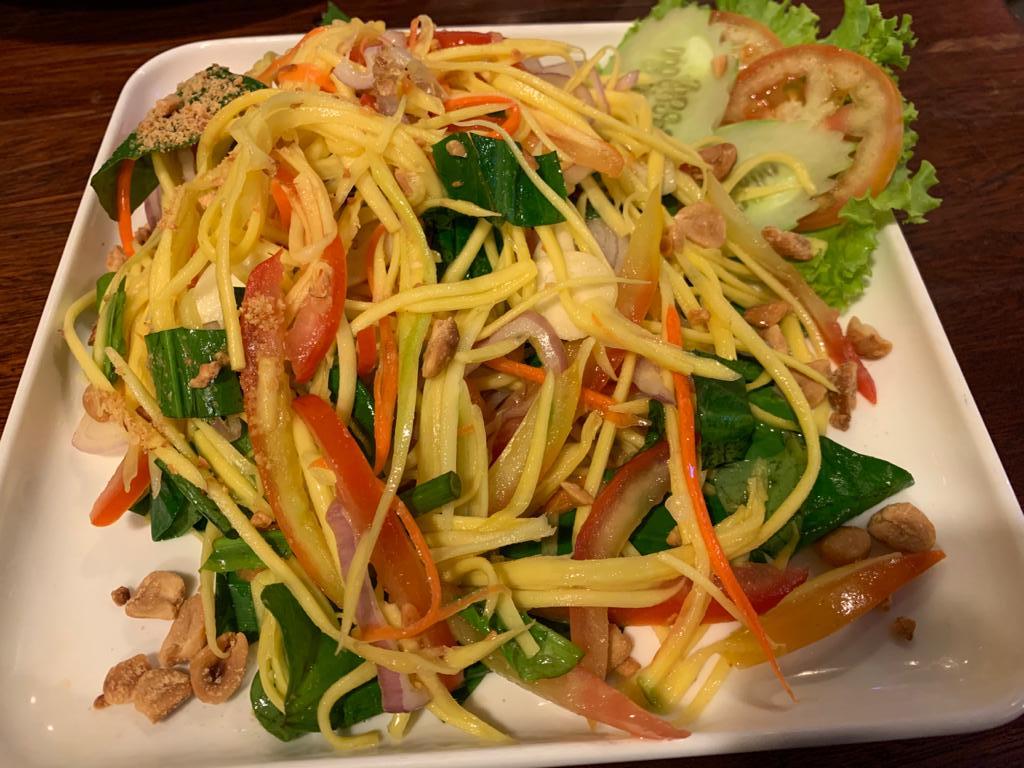Cambodia
Celestial Cambodia - A beautiful, Haunting and yet hopeful country.....
After a night flight to Bangkok from Bangalore (via AirAsia), and a dawn flight to Phnom Penh, and a car-ride through the chaos that is the Cambodian capital in rush-hour – a chaos full of miracles, like entire families of 5 or 6 people, perched on scooter and apparently surviving – I arrived at the City Centre Hotel & Hostel on 130th Street. I was greeted with the smell of fresh lemongrass and warm smile from the wonderful hosts, as soon as I entered the Hostel. The people of Cambodia are one of the most passive and humble people I have ever met. The local people and their culture is commonly called as Khmer (pronounced Khmai) and the capital city is pronounced as P-nom-Pen.
The Hostel-cum-Hotel is right in the middle of the market street, built in 1987 where the night life of Phnom Penh springs to life, was once the most popular gathering spot of locals when Cambodia was a peaceful country full of temples and paddy fields and Buddhas. It was the favoured meeting place of French writers and foreign correspondents, and it was here from where they fled in 1975, when the Khmer Rouge marched on Phnom Penh and launched one of the bloodiest regimes in history. It is believed to be second biggest human genocide in history – second only to the Nazi regime.
I had booked a dormitory at the hostel (4 beds in a room) at the price of $6 per night. But due to the beginning of Coronavirus outbreak spreading across China and surrounding areas, there were lots of cancellations from tourists visiting Cambodia and hence I got my dormitory upgraded to a single room at an extra $2 per night.
The taxi guy who picked me up from the airport, Mr Leab gave me an offer I couldn’t refuse. After dropping me to the Hotel, he offered to wait till I check in, get myself refreshed and then to drive me around Phnom Penh to the important attractions and then drop me to the Bus station the next day morning for a mere USD 20. I soon learned that this is a big amount for him, as he usually makes $10 for an airport trip and then $2-3 for any local trips within the city. It turned out to be very cheap for me too as 2 other Italians staying at the hostel also agreed to share the ride and split the cost with me.
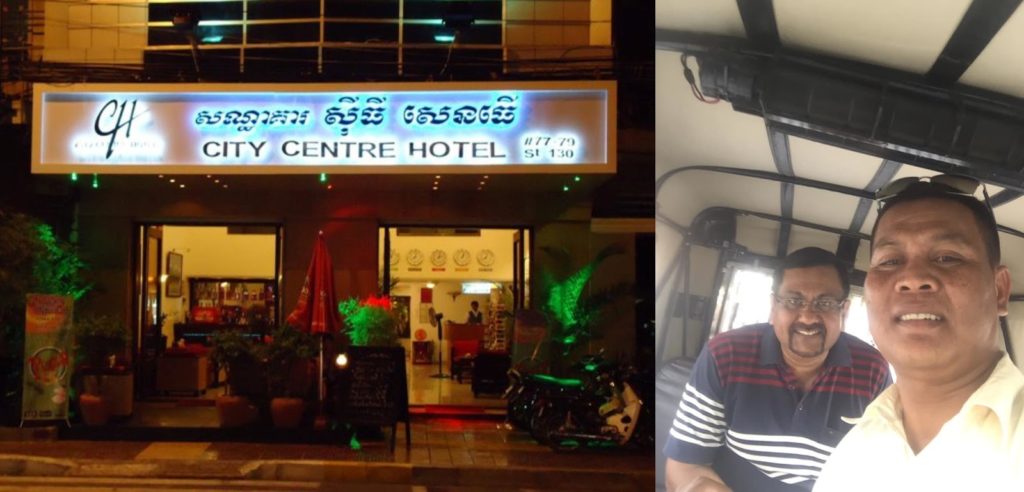
For all tourists going into Cambodia it is a great relief to know that US dollars are accepted everywhere – from roadside vendors to big hotels. The current conversion rate of 1 US$ is equivalent to 4000 Cambodian Riel. But need to remember that the transactions do happen in both currencies. For example, if you buy something worth US$6 and you pay US$10, you may end up getting back US$2 plus 8000 Riel as balance. Observing the way local people use US$, I have a feeling that the Cambodia Riel will soon be out of circulation and the entire country will move towards US$.
After a quick check-in and shower I headed out to the second most visited place in Phnom Penh – Tuol Sleng Genocide Museum or S-21 Prison as it was called then. When the Khmer Rouge took the city, they converted the Tuol Svay Prey High School into a centre for detention and torture. This was the place the government brought in people who either opposed them or simply didn’t openly support. The regime made sure that all educated men between the age of 18 and 35 were mandatorily brought here and tortured until they sing praises of the regime. On the way to the Museum, Leab made himself clear that he will only drop me the museum and he won’t come inside. The local residents still have painful memories of the place with at least one member from their family still unaccounted for or killed. Every person I met in Cambodia had a story to tell about either a missing relative or a tortured uncle or a killed grandparent. I listened to all those horror stories and was soon in a state of shock, depression and sadness.
The entry ticket into the museum compound is $8 for foreigners and free for locals. People visiting all the attractions in Cambodia should follow cultural dress-code (shorts/trousers covering your knees and shirts/T-shirt with sleeves).
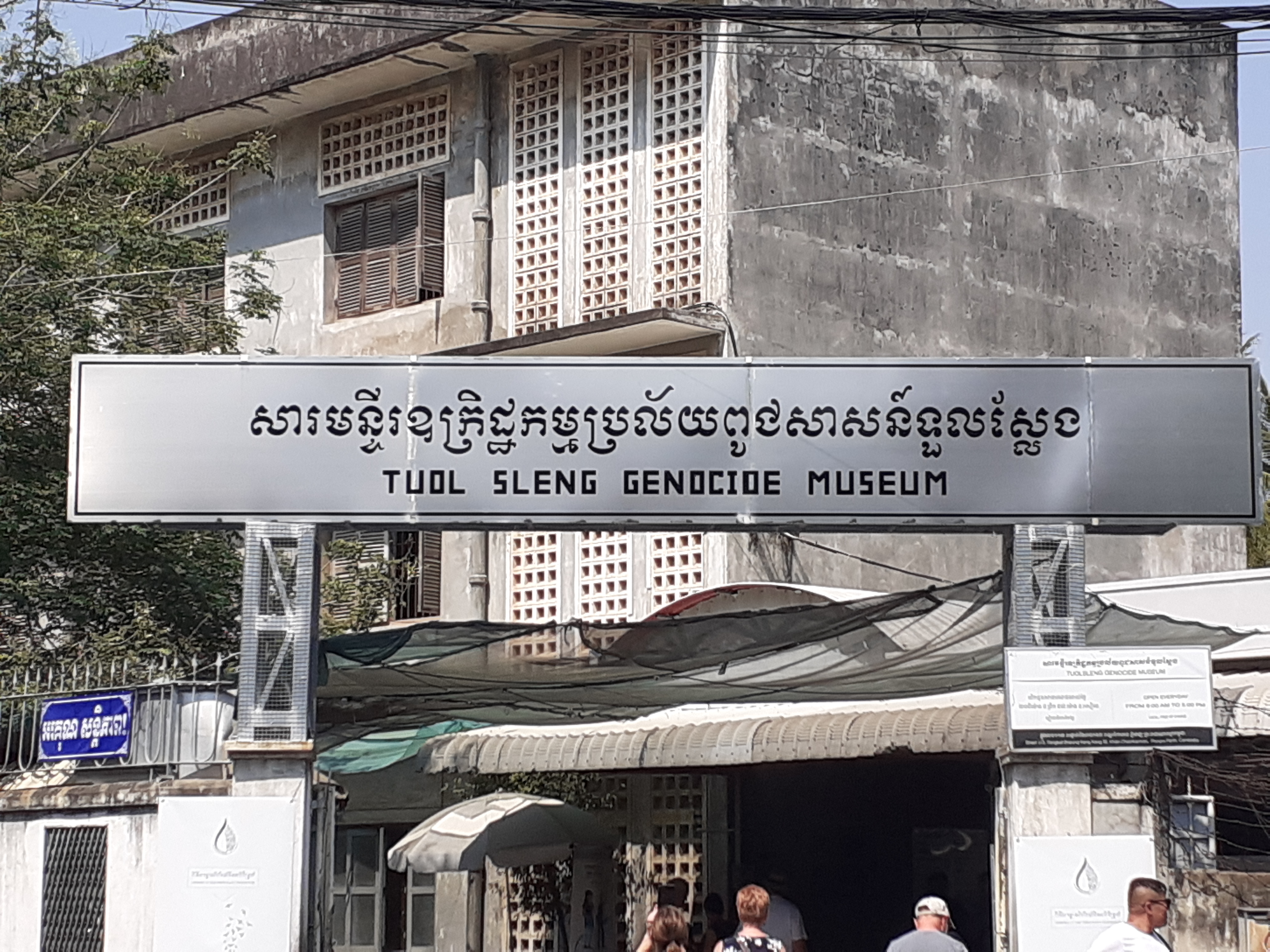
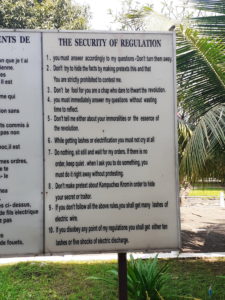
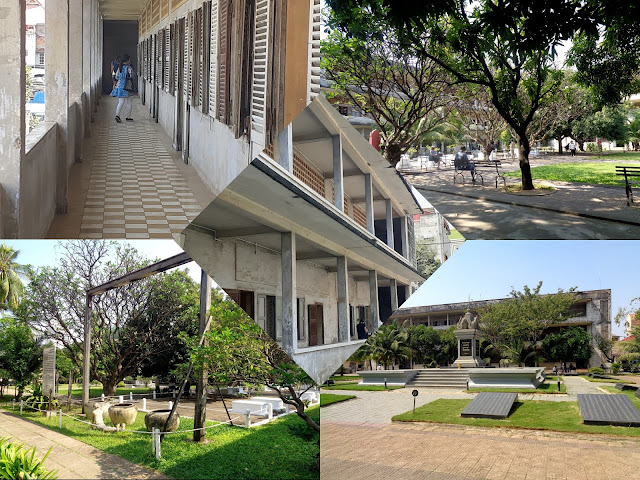 |
Between 1975 and 1978, some 20,000 people held at S-21 were taken to the Killing Fields. Like the Nazis, the Khmer Rouge leaders were meticulous in keeping records of their barbarism. Each prisoner who passed through S-21 was photographed, sometimes before and after torture. The museum displays include room after room of photographs; virtually all of the men, women and children pictured were later killed. When the Vietnamese army liberated Phnom Penh in early 1979, there were only seven prisoners alive at S-21, all of whom had used their skills, such as painting or photography, to stay alive. Fourteen others had been tortured to death as Vietnamese forces were closing in on the city. Their graves are nearby in the courtyard.
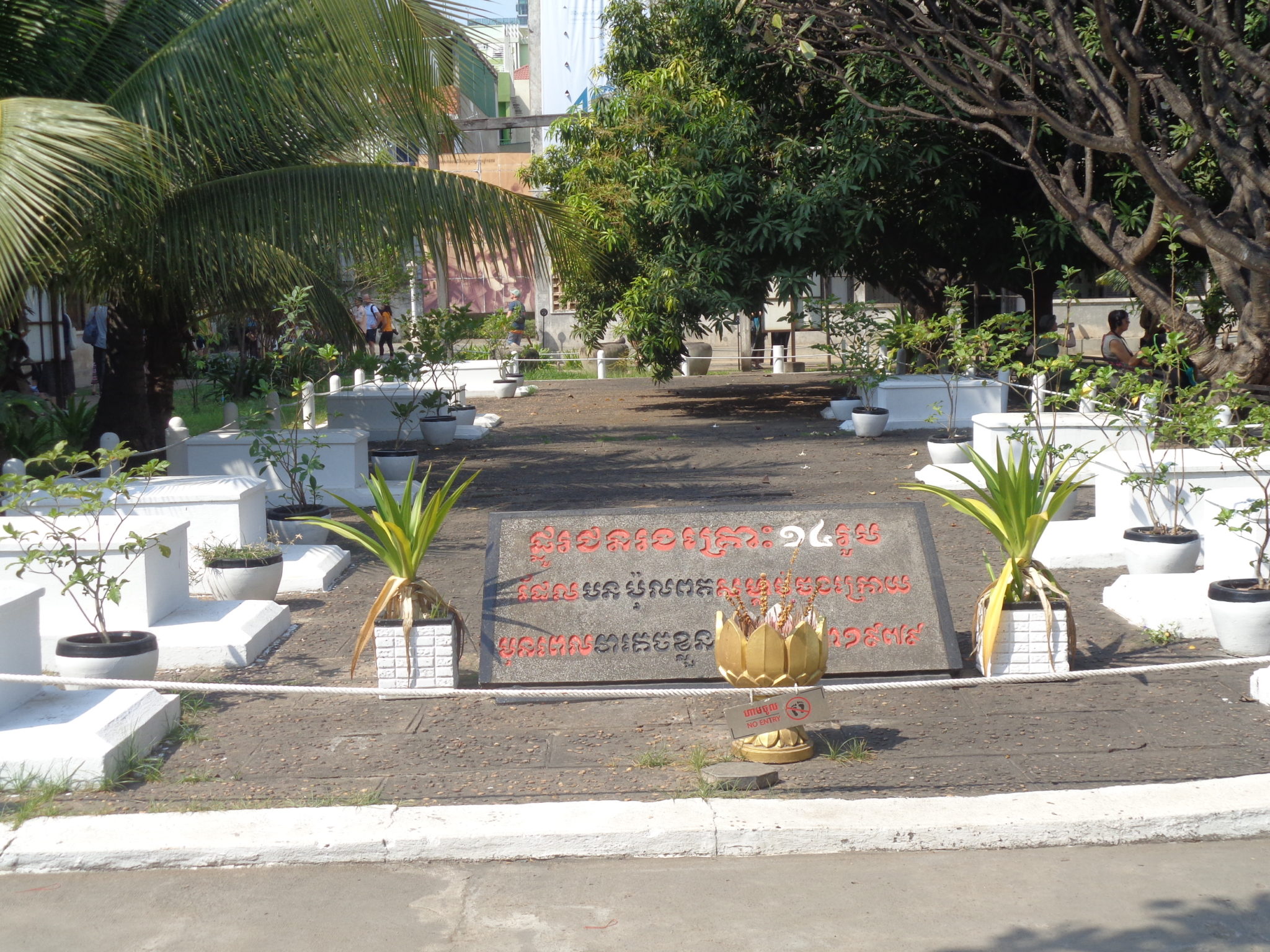
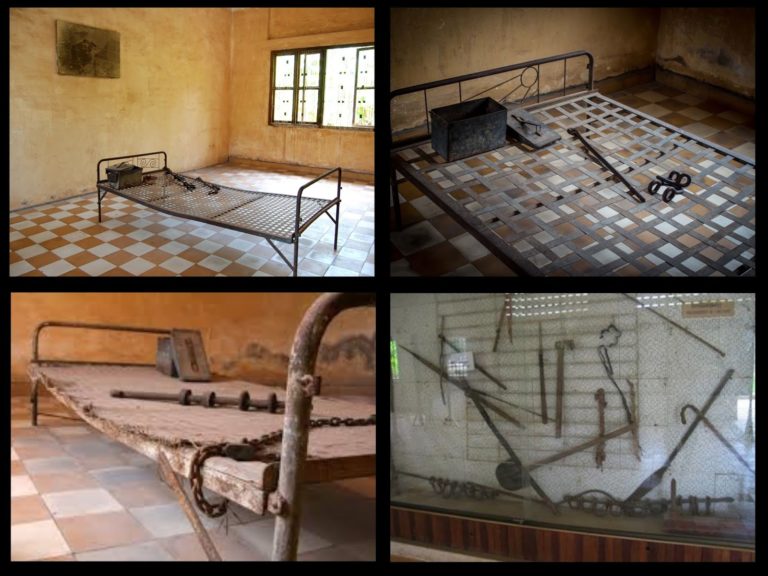
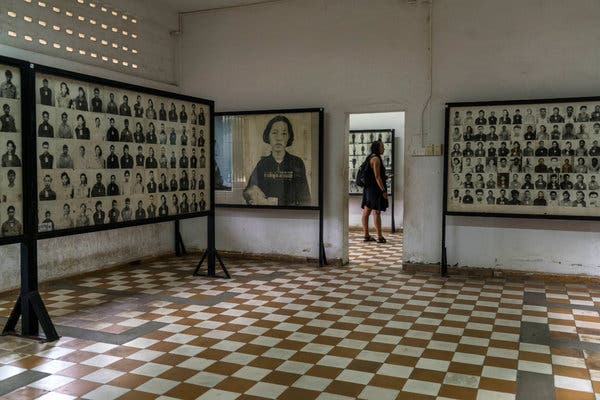
The last building in the museum displays thousands of photos of the victims – tortured, killed or unaccounted for. It is said that local Cambodians still visit this building and scan through the photos again and again hoping to identify any of their missing family member. Photography is restricted in this building.
Right outside the museum I had my first taste of Cambodian cuisine. I had Duck Lok Lak. It is a traditional Cambodian dish with strips of stir-fried duck marinated in soy sauce. This is served in the excellent company of fried egg (sunny-side-up), crispy fresh lettuce, freshly sliced cucumbers and tomatoes, raw onion and a delicious peppery lime dipping sauce.
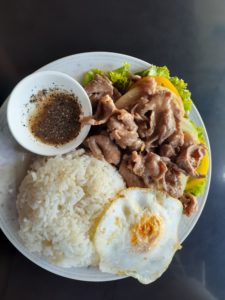
From the Genocide museum, we went to the Choeung Ek Genocidal Center or simply know as the Killing Field which is about 15 km away. The Choeung Ek Killing Field at Phnom Penh is one of the most prolific and historic place in Phnom Penh and stands a cruel reminder of the atrocities inflicted upon the masses of Cambodia. The place has become very notorious as it is the center of all killings which took place in the city and later got christened as the famous Killing Field. This is where the remains of tens of thousands of people, many of whom were bound and blindfolded, were exhumed in 1980 from mass graves in this one-time orchard garden. Fragments of human bone and bits of cloth are scattered around the clearly marked pits. More than 8000 skulls, arranged by method of killing, sex and age, are visible behind the clear glass panels of the Memorial Stupa, which was erected in 1988. There are around 86 mass grave sites in the compound which reminds one of the horrifying times the people of Cambodia have gone through during the reign of Khmer and afterwards. There are supposed to be more than 100 such killing fields across various regions of Cambodia.
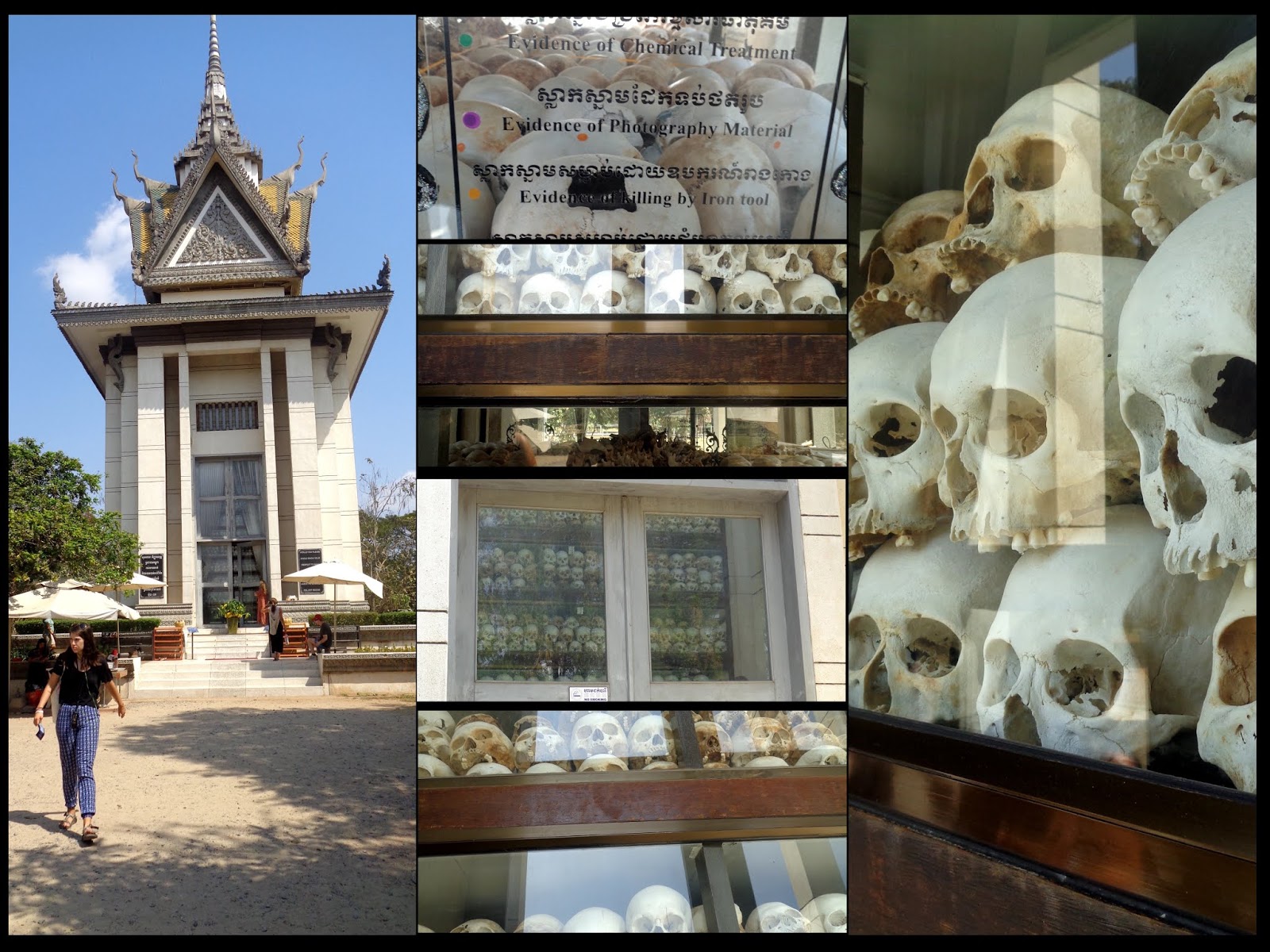
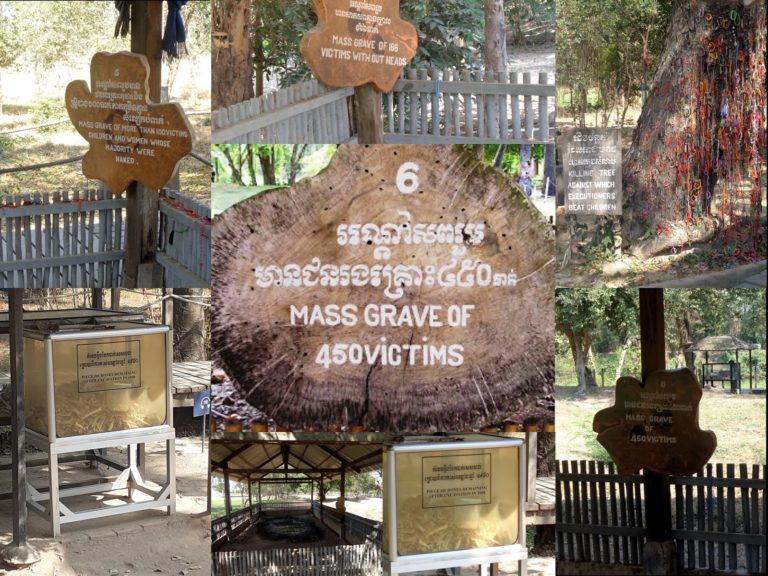
After seeing these 2 memorials of human cruelty and barbarism, I needed something to brighten my day. There is nothing more bright in Cambodia than the Royal Palace at Phnom Penh. Home to Cambodia’s official royal residence, the grounds of Phnom Penh’s Royal Palace and Silver Pagoda are awash with regal structures, colourful temples, collections of gifts from foreign leaders and murals that paint a picture of the country’s glorious past. Large parts of the sprawling grounds and formal gardens are open to the public, featuring artistic constructions, famed pagodas, colourful bougainvillaea and Parisian-inspired paths. However, it still remains the official royal residence of King Sihamoni, so the areas devoted to royal living are closed to visitors. The entrance fee for the palace is $10.
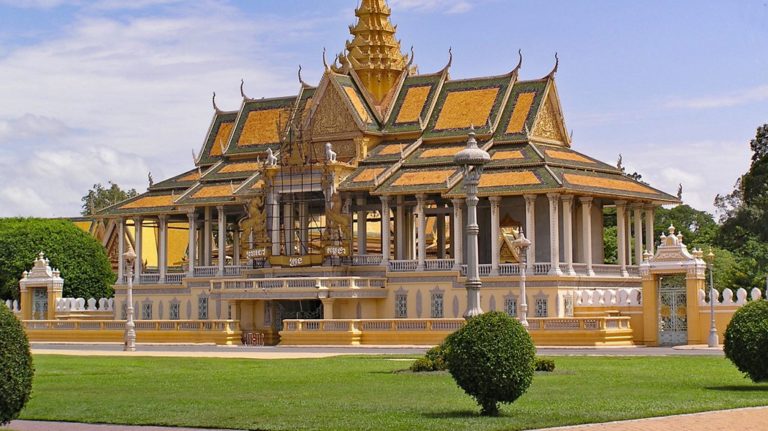
Adjacent to the main building is the Silver Pagoda which is an impressively ornate structure that is also known as Wat Preah Keo, or ‘Temple of the Emerald Buddha’. Originally built as a wooden construction in 1892 under King Norodom, it was rebuilt in its current state in 1962, dripping with silver and jewels,. It is one of Cambodia’s only temples to survive under the Khmer Rouge. However, half of its contents were pillaged or destroyed during the Vietnamese invasion and years of turmoil that followed.
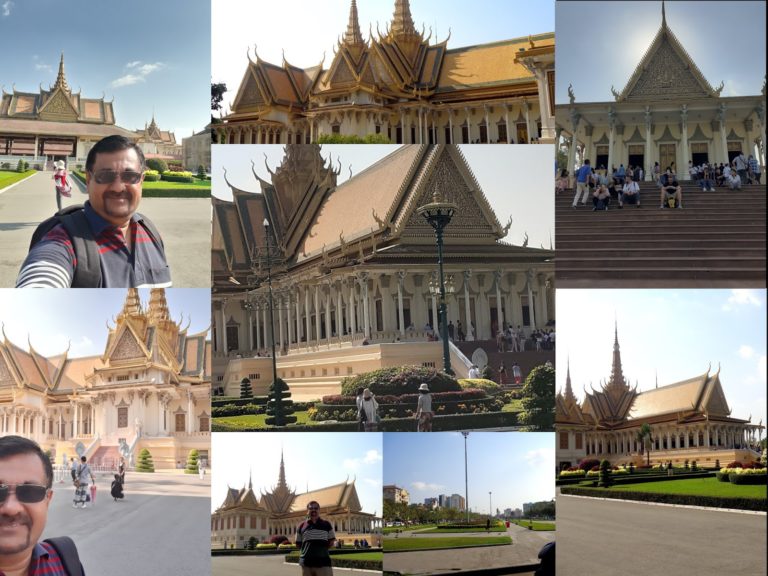
After a long hectic day of viewing the cruelties and glory inflicted on a small nation, I had a quiet dinner at one of the many local restaurants along the beautiful Mekong river and retired to my hotel room.
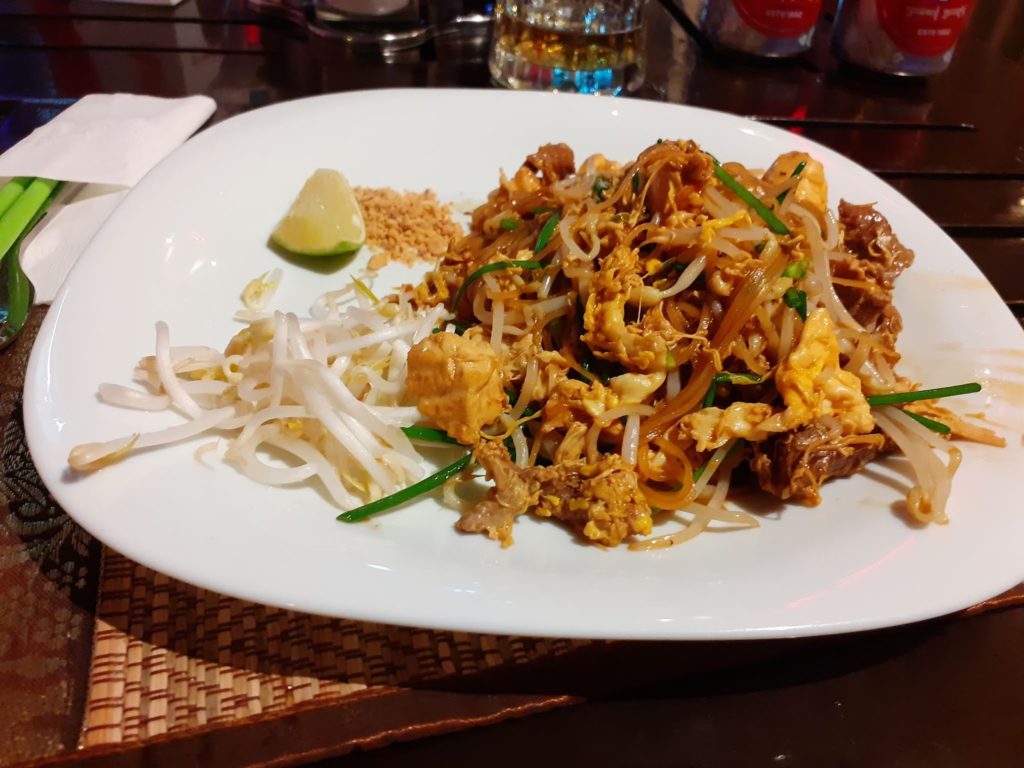
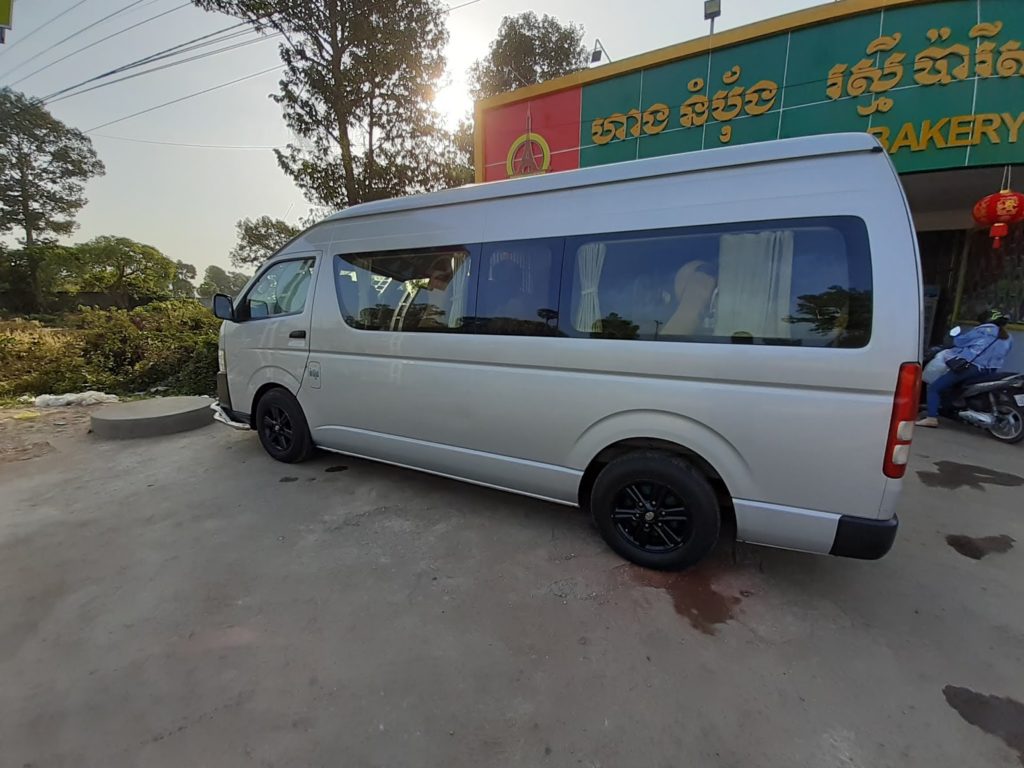
The next day, I started by 7.30 am to Siam Reap in a Toyota Omnibus. Siem Reap, a small town in northwestern Cambodia, is the gateway to the ruins of Angkor, the seat of the Khmer kingdom from the 9th–15th centuries. Siam Reap is about 310 Km from Phnom Penh and the journey took nearly 5 hours. Siem Reap is one of those places that caters to every taste and its difficult to get bored in this ever-evolving city. The variety of cuisine, accommodation, shopping, modes of transport, and daily activities is quite astonishing for what is actually a relatively small town which can seem a sleepy town by day (because everyone is at the temples). The city also has an old market and a French quarters which do attract a lot of tourists. More than 60% of the town’s population rely on the tourism industry for their daily livelihood.
From the bus stop I went directly to Hotel Viroth’s Villa, at the centre of Siam Reap where my childhood friend Anand was waiting. He landed there directly from Singapore and had already checked-in. Anand and myself go a long way back – we studied together right from kindergarten to Pre-university in the same school and college. The first thing that caught my eye in the Hotel was the number of Caucasian staff working there. I soon found that all are French students who come opt Cambodia as a part of their curriculum internship or project work or simple student-exchange program. Cambodia was once a French colony and still has a very good relationship with France. Majority of the tourists that come to Cambodia are from France. Hence French is taught as second language in number of schools across Cambodia and as a local, if you are fluent in French there are good job opportunities in the tourism industry as tour guides, in hotels & restaurants.
After checking-in and a quick lunch, we headed out to explore the nearby areas around the Hotel. One thing that is baffling is that the tickets for Angkor Wat and other temples are not sold at the respective places. They have a ticket counter for these temples in a separate building, in the middle of the city far from all these temples. I still can’t understand the logic behind that. So if anyone directly goes to the temples hoping to buy the tickets from there is surely going to be annoyed and disappointed. The type of tickets available are 1-day, 2-days or 7-days. Since we were planning to be there for 3 days, we bought a 7-day valid ticket. The tickets cost for the temples entries are a bit high, considering how cheap the rest of Cambodia is. The price for 7-day ticket was $62.
We bought the tickets for the temple, then hired a tuk-tuk and sped to the Angkor Balloon ride. The ticket price for the balloon was $12 and was a bit of disappointment. Our thrilled expectation of flying over Angkor in a hot air balloon was immediately laid to rest, when we realised that the balloon is tied to a point on the ground and it just raises vertically up the air for around 300 meters and then comes down. Since it is tied loosely, it did swing horizontally for a few minutes high up in the air, scaring everyone in the gondola basket for a few minutes. Anyway, we could have a majestic aerial view of the Angkor Wat temple from up above and managed to capture a few photographs.
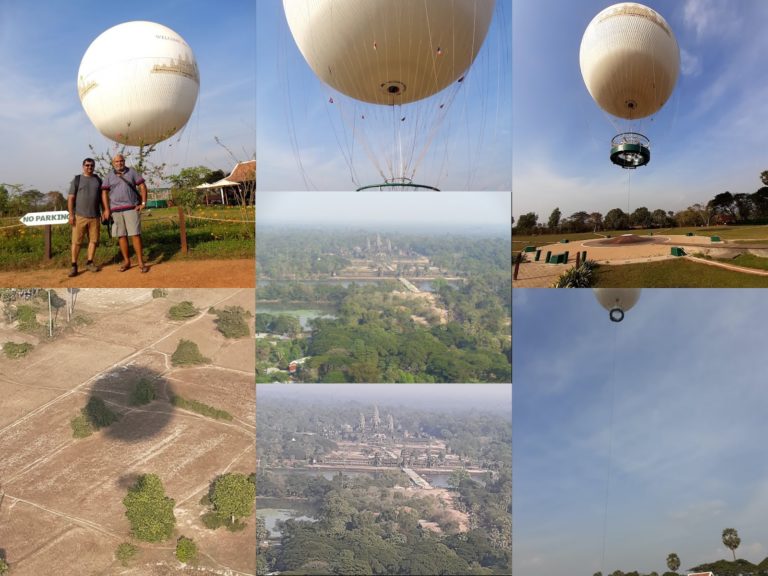
By the time we completed our balloon ride, it was half past five. We decided to take a quick visit to Angkor Wat temple to see the exteriors & the sunset, as there wasn’t much time left before Angkor Wat closes for the day.
We headed back to our hotel and then decided to go to the Pub Street for dinner. Pub Street is at the heart of the tourist centre of Siem Reap. Everything you do in the evening time is likely to revolve around this part of town. In fact, it’s often said that a trip to Siem Reap isn’t complete unless you visit Angkor Wat and Pub Street! Situated next to the Old Market, Pub Street (officially Street 8), has grown to become the centre of all nightlife in Siem Reap. The area is full of restaurants, bars, nightclubs, street food, shops, market stalls, and just about everything else you could imagine. If you’re looking to get a fish massage for your foot, eat some fried ice-cream, dance until 2 o’clock in the morning, or just get a good meal after a day exploring Angkor Wat, then it’s likely that you’ll be heading to Pub Street.
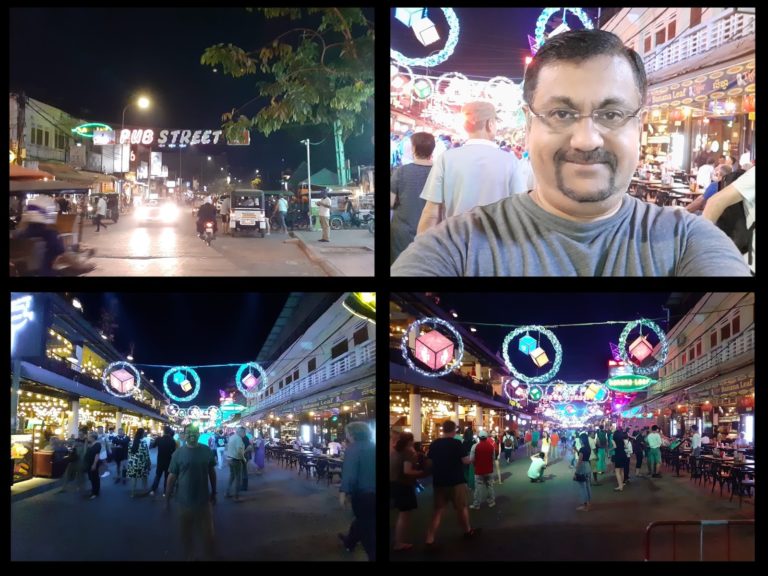
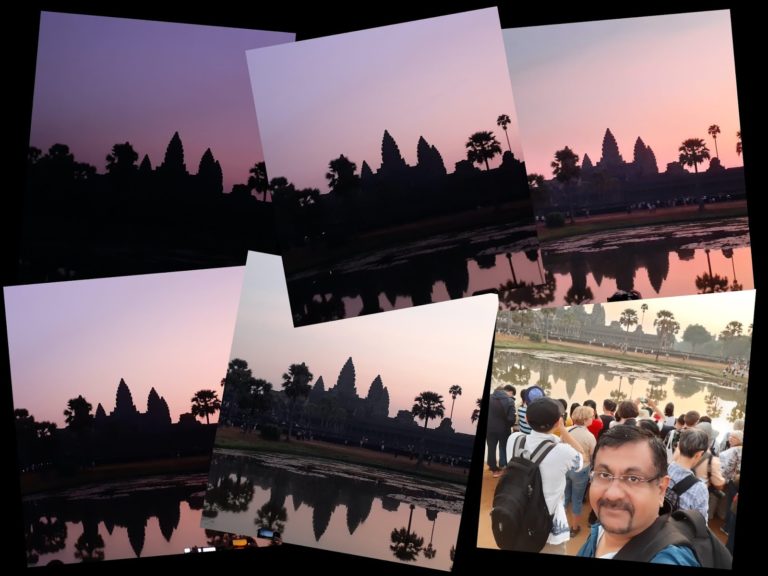
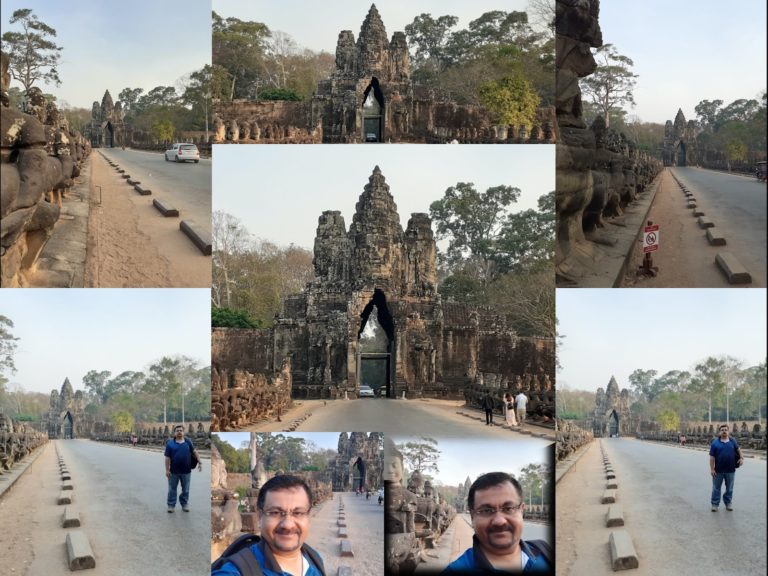
A few minutes drive from the South Gate took us to the Bayon Temple. Bayon was the state temple of King Jayavarman VII. The temple is best known today for the gigantic face sculptures that adorn its thirty-seven surviving towers. Facing in four directions on each tower, the faces can be seen from afar. When it comes to the many faces of Bayon Temple, there’s some debate over who they actually represent. Some archeologists think that they are King Jayavarman VII himself while other theories suggest that they are the face of Buddha. King Jayavarman is known have proclaimed himself as the living God.
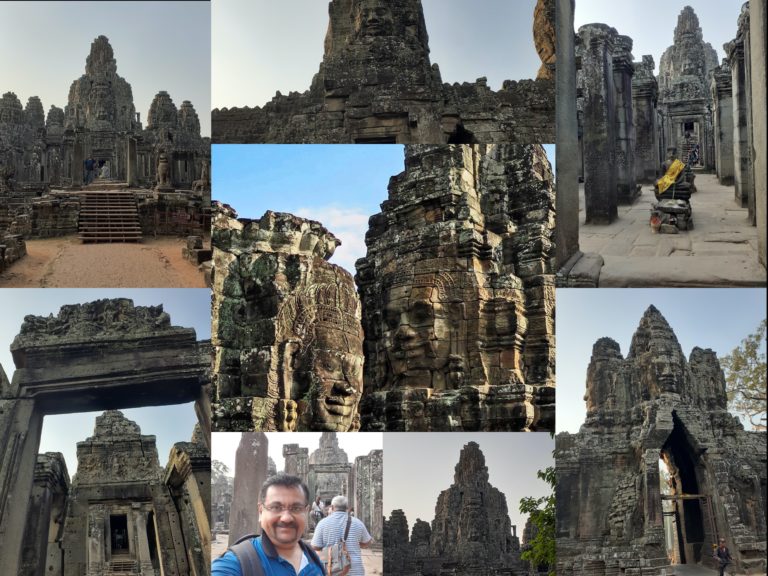
Our next destination for the day was the Elephant Terrace, which is a 60 meter long sandstone wall that forms the eastern boundary of the Royal Palace area. The terraces served as an observation point from which the king and his ministers could observe military reviews, dances, and various ceremonies in the large open area. Some historians suggests that the terraces served as the foundations for various palace buildings, which unfortunately have not survived as they were made of wood and other perishable materials.
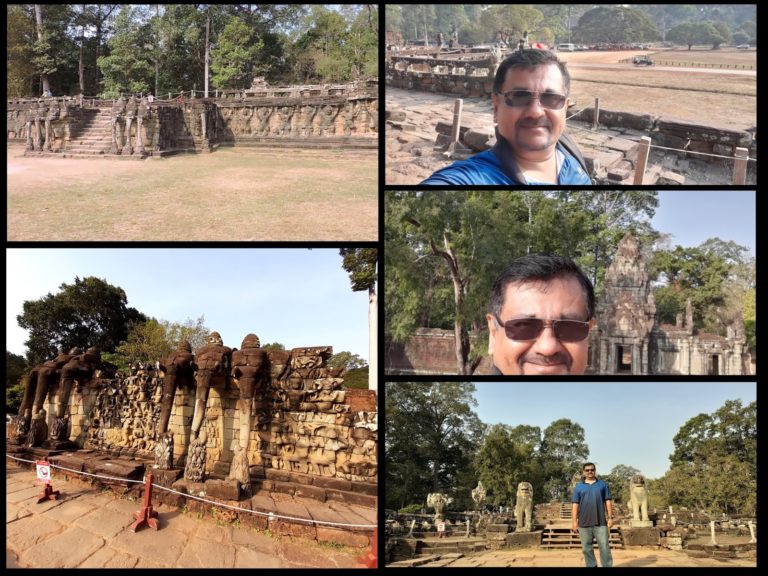
From the Elephant Terrace, we went to Ta Prohm. It was also built during the reign of Jayavarman VII, who reconquered the Khmer empire from Cham invaders in the years 1177-1181. Needless to say, the war caused great damage to the ancient capital of Angkor. The ambitious king set about making it into a proper seat of power by ordering the reconstruction of a number of temples. Ta Prohm was the centerpiece of his master plan, located roughly in the center of the capital. Now more famously known as ‘Tomb Raider Temple’ (thanks to the action scenes of’ Lara Croft : Tomb Rider’ movie being shot here), Ta Prohm is cloaked in dappled shadow, its crumbling towers and walls locked in the slow muscular embrace of vast root systems. Undoubtedly the most atmospheric ruin at Angkor, Ta Prohm should be high on the hit list of every visitor. Its appeal lies in the fact that, unlike the other monuments of Angkor, it has been swallowed by the jungle, and looks very much the way most of the monuments of Angkor appeared when European explorers first stumbled upon them.
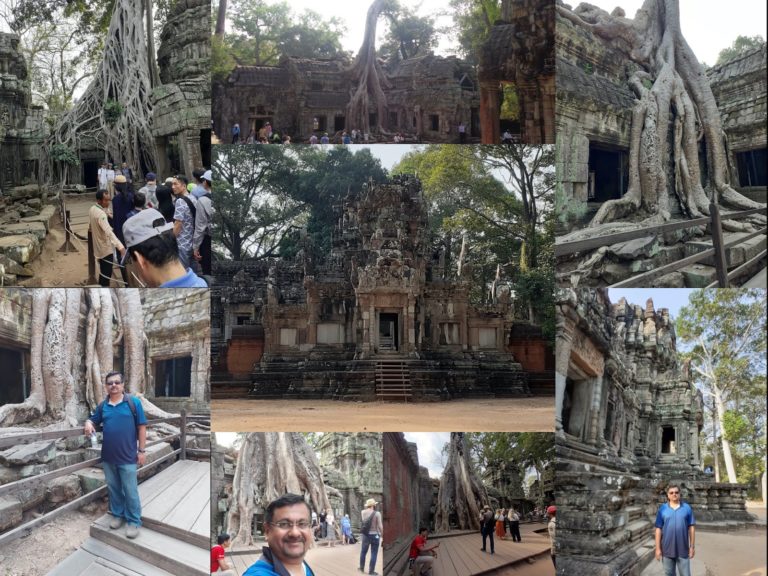
By the time we completed Ta Prohm, it was past 12 noon. The long day which started at 4.30 am had already started to take a toll on us and we decided to wrap it up for the day. We were planning to go back to Angkor Wat after Ta Prohm, but we could hardly walk even a few yards in the tropical heat of Cambodia. We went back to the hotel for a nice lunch and a quick afternoon power nap. Late evening, we made our way back to Pub Street again for a few drinks and authentic Cambodian food.
The next day morning by 9.00 am we made our way back to Angkor Wat temple. The previous dawn we just saw the sunrise. So today was the big day to see the mighty Angkor Wat. Built between roughly A.D. 1113 and 1150, and encompassing an area of about 500 acres, Angkor Wat is one of the largest religious monuments ever constructed. Its name means Temple City. Originally built as a Hindu temple dedicated to the god Vishnu, it was converted into a Buddhist temple in the 14th century, and statues of Buddha were added to its already rich artwork. Its 213-foot-tall central tower is surrounded by four smaller towers and a series of enclosure walls, a layout that recreates the image of Mount Meru, a legendary place in Hindu mythology that is said to lie beyond the Himalayas and be the home of the gods. According to inscriptions, the construction of Angkor Wat involved 300,000 workers and 6000 elephants. It was not fully completed.
One tale Angkor’s artists and historians did not tell, is why the city’s rulers abandoned the site and resettled near modern Phnom Penh. Theories include defeats in battle and shifting religious observances, (because the Khmer’s Hinduism was gradually replaced by Buddhism during the 13th and 14th centuries), but the mystery has puzzled scientists for centuries. A major flood is also believed to have contributed to the settlement’s final collapse and abandonment.
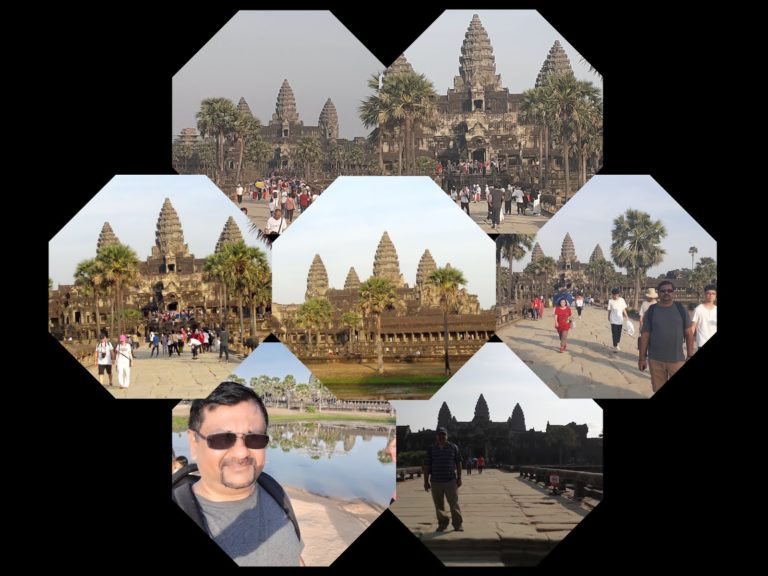
But for me, I was simply struck by its imposing grandeur and, at close quarters, its fascinating decorative flourishes. One can’t stop admiring the architectural geniuses behind these constructions.
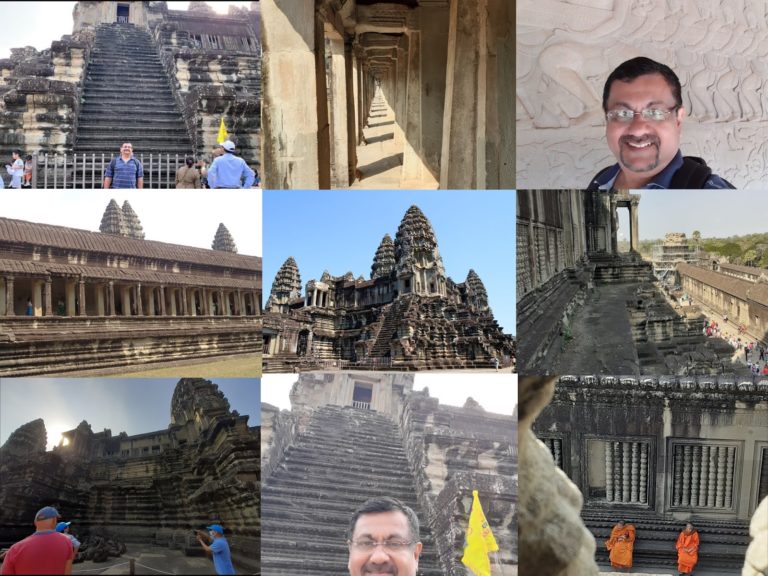
Also at the same time, I feel sad that the magnificent temple architecture in South India doesn’t always get its due credit. It may be our inability to showcase our work to the outside world or the fact that many Hindu temples still don’t allow non-Hindus to enter and see the grandeur. The construction of the temples at Thanjavur, Rameswaram & Padmanabha Swami Temple at Trivandrum are supposed to be much more complex and artistic than many other famous constructions around the world. But very few in the outside world know about these.
Our final destination at Angkor was Preah Khan temple. Preah Khan temple is located in the north of Angkor Thom and is still largely unrestored. It is one of the larger temple complexes within the historic park. Preah Khan translates to ‘Holy Sword’ in Khmer, named by Jayavarman VII in honor of his battle victory against the invading force of Chams, who belonged to a kingdom in what is now Vietnam, in the year 1191. This majestic temple complex is surrounded by a man-made waterbody, and its surface area stretches over an area of 56 hectares.
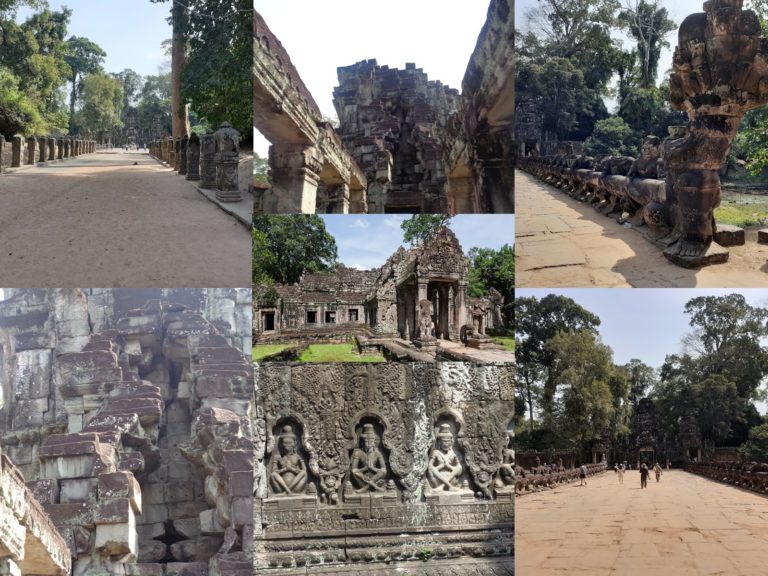
Below are the some my favourite and recommended must-try items.
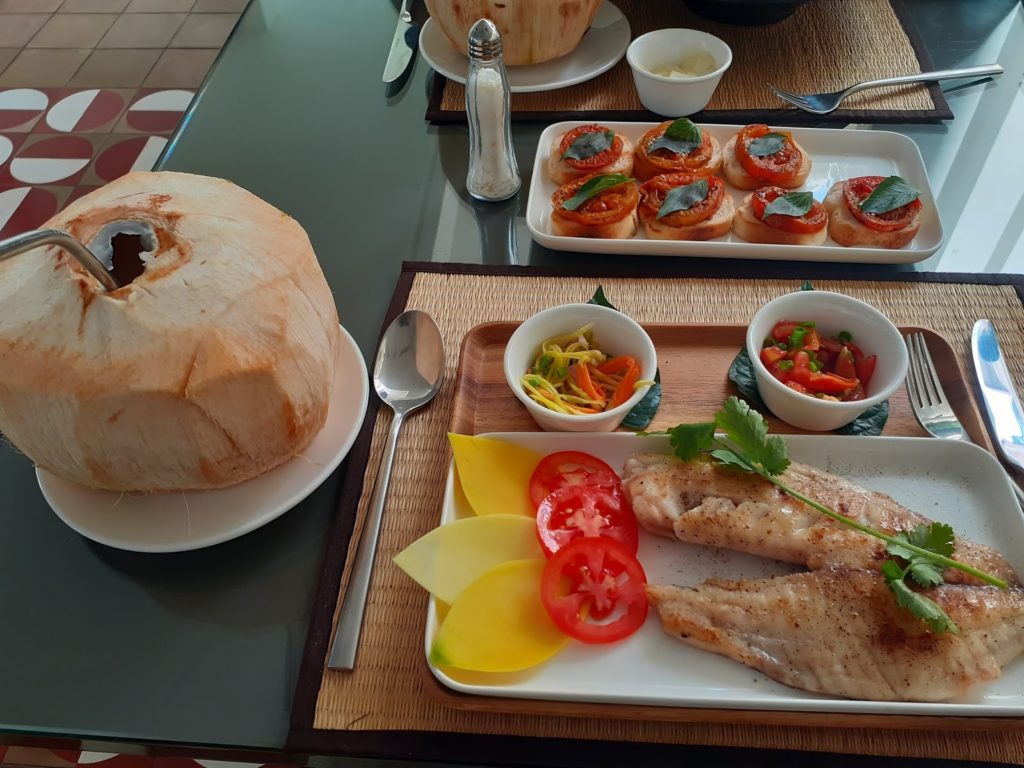
Fish Amok : Grilled fish with spices and herb, usually served with Mango salad and tender coconut drink. Price $4-6 in restaurants and $2-3 in roadside shops
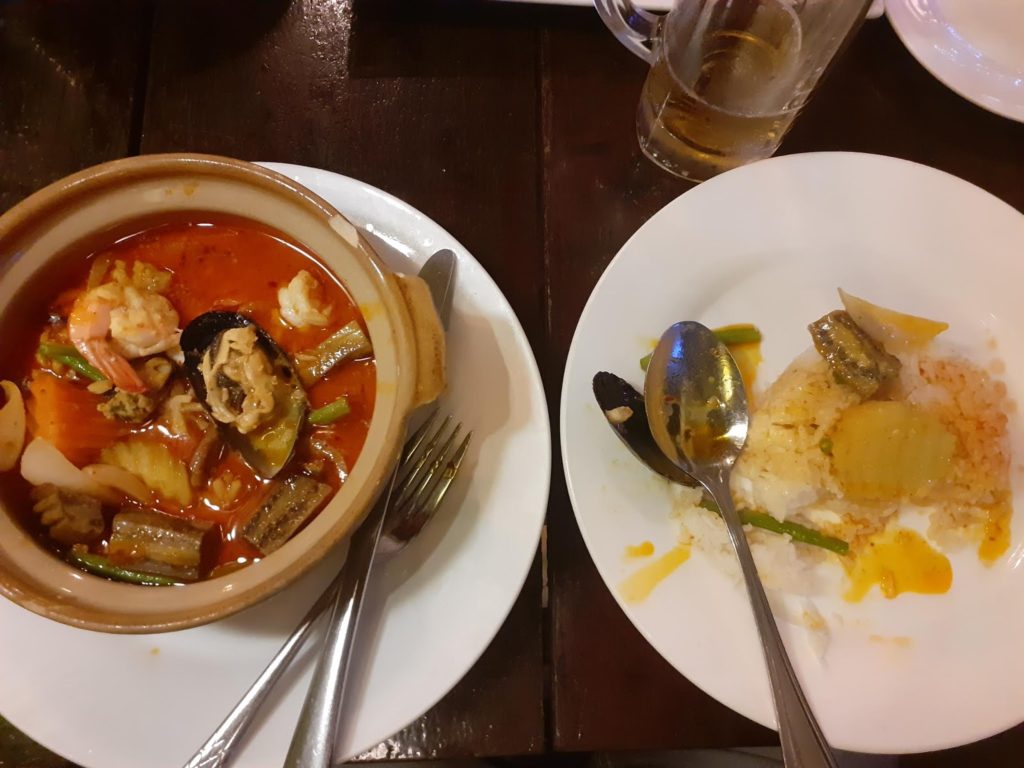
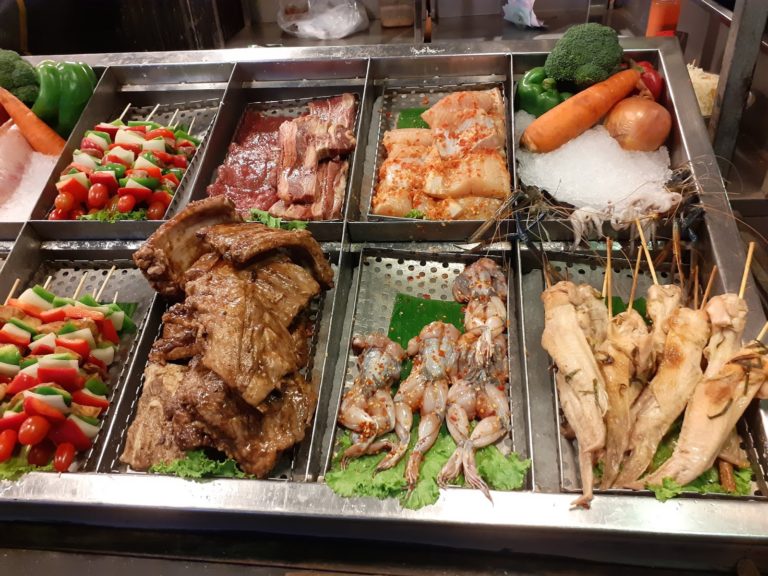
BBQ Skewers : Skewers of chicken, beef, Pork ribs, frog, snake or squid. Price $2 per skewer.
Coconut Chicken Amok : Chicken and vegetables cooked with spices and served in a coconut along with rice. Price $3-4
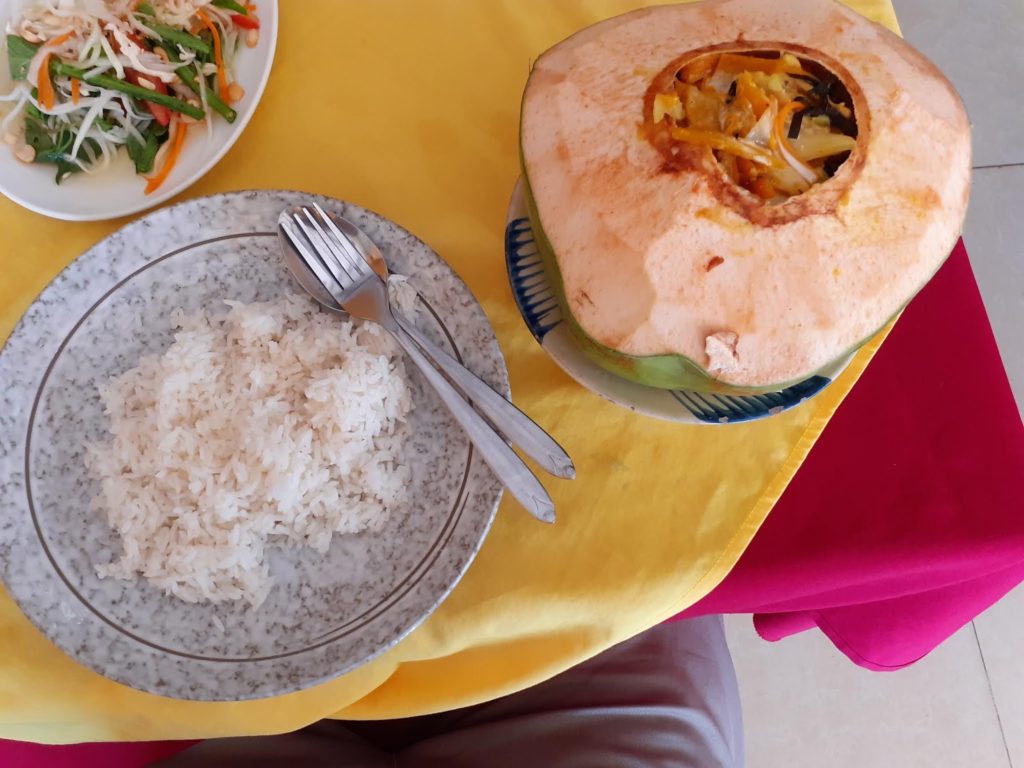
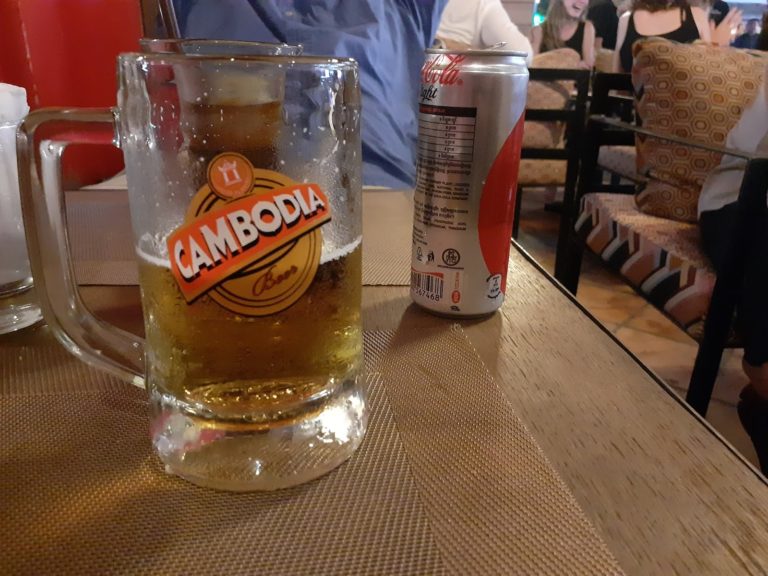
Cambodia Beer : Most popular Local beer. Price $0.5
Crocodile Steak : Thin layer of crocodile steak served with pepper sauce and baked potato. Price $6-8
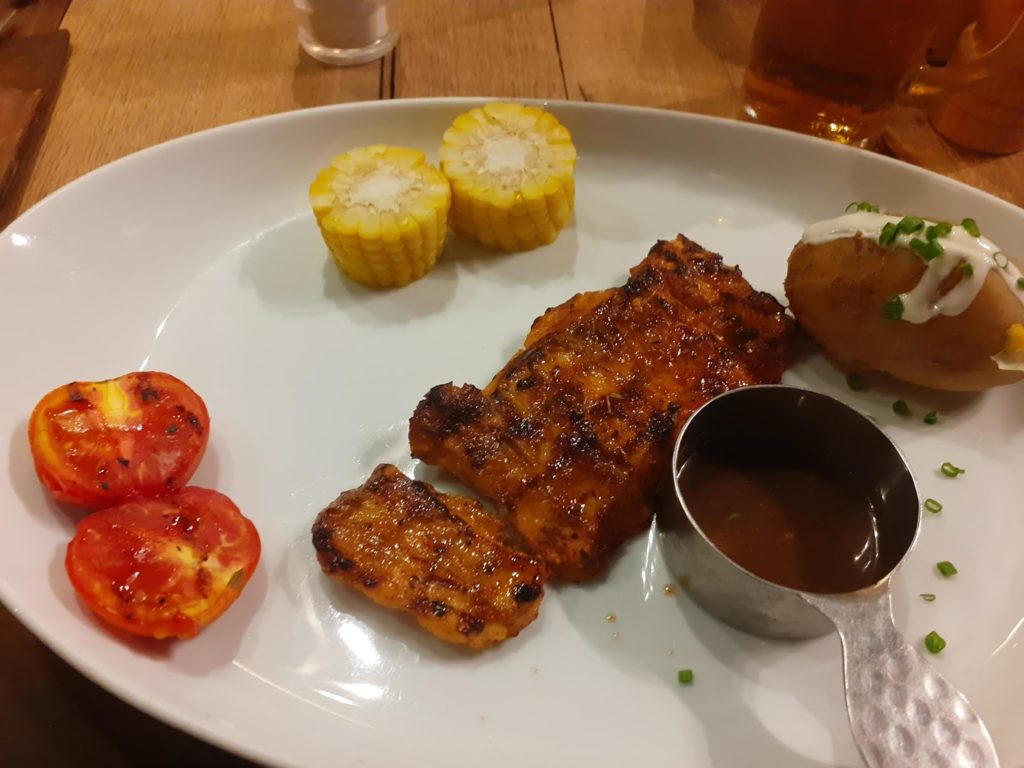
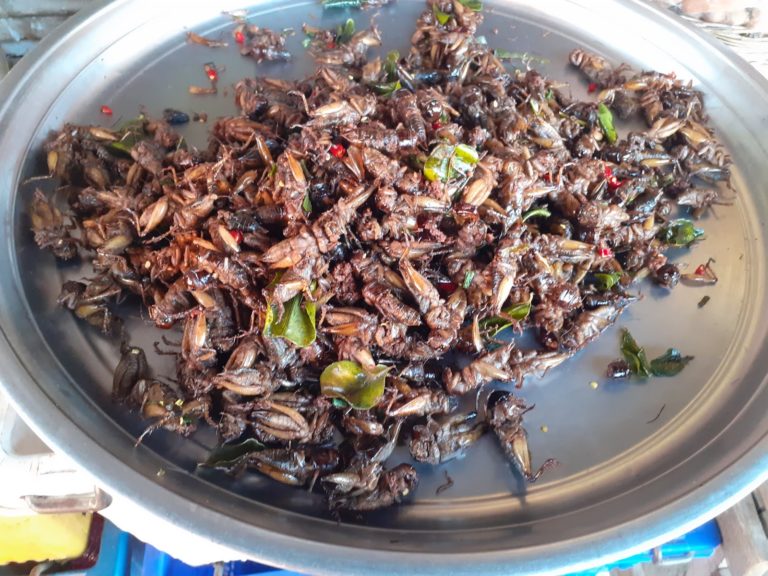
Fried cockroach/Beetle : Crispy fried. Price $1 per plate
Mango-Pumpkin salad : Thinly sliced green mango & pumpkin served with peanut and vegetables. Price $2-3
